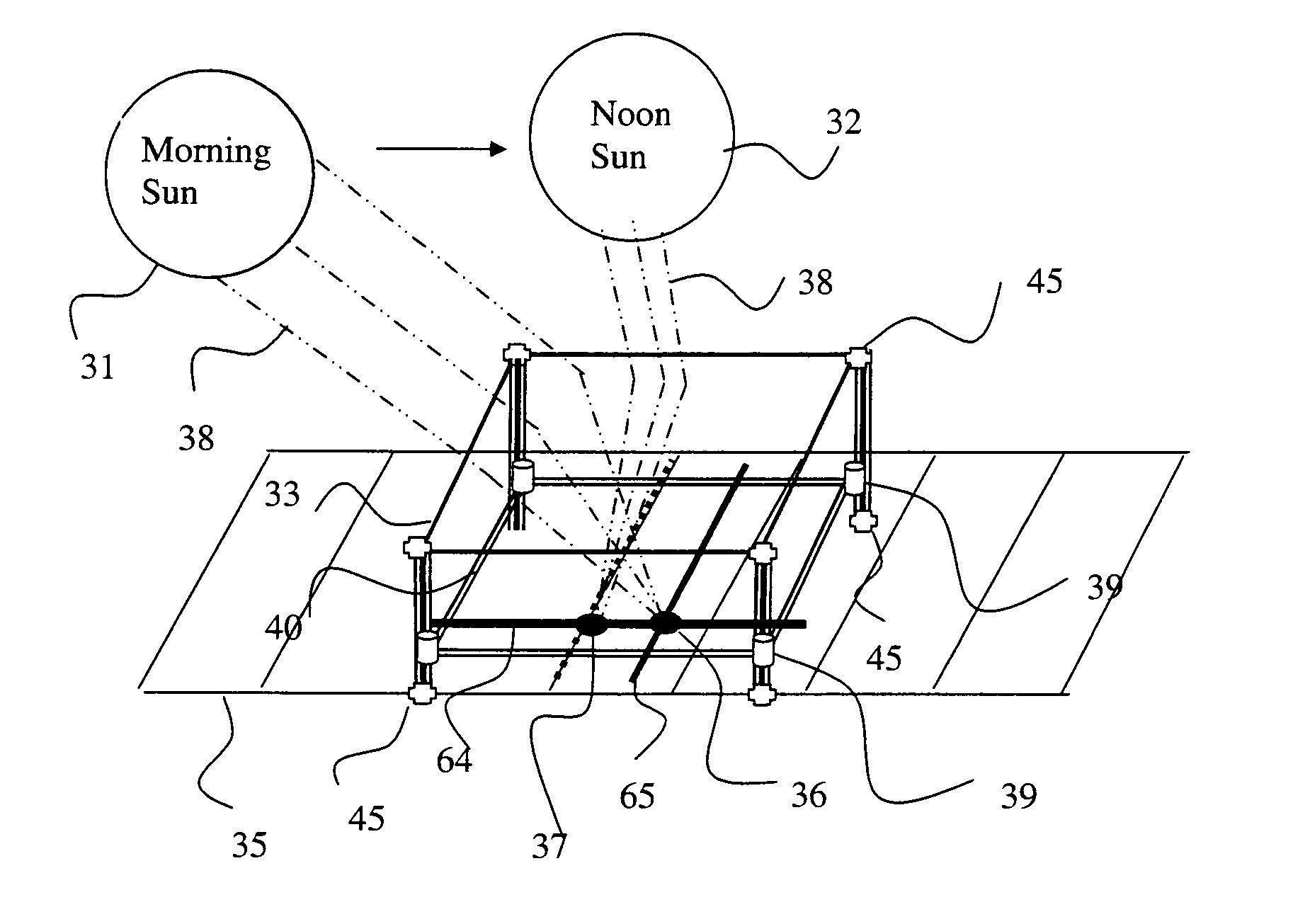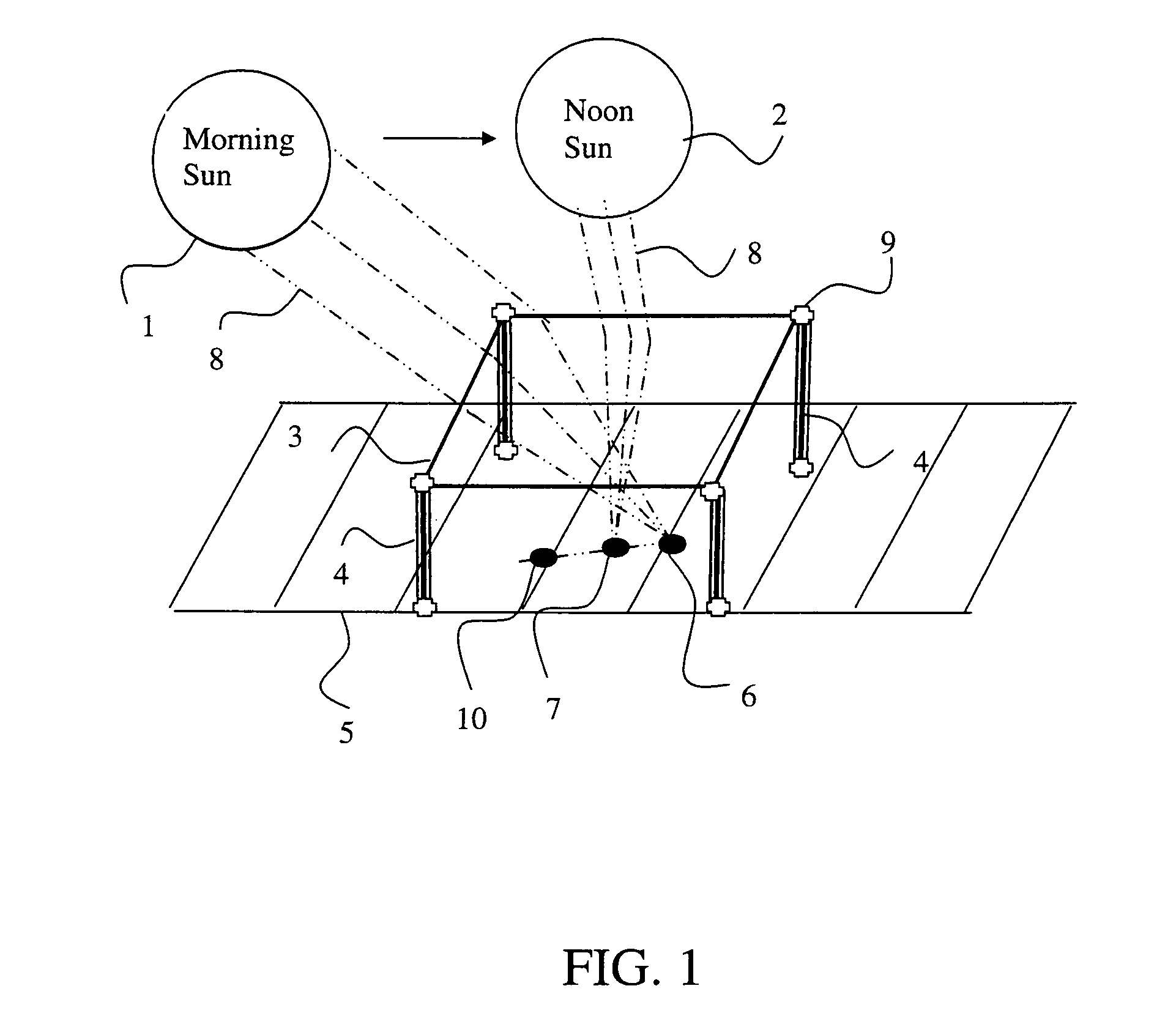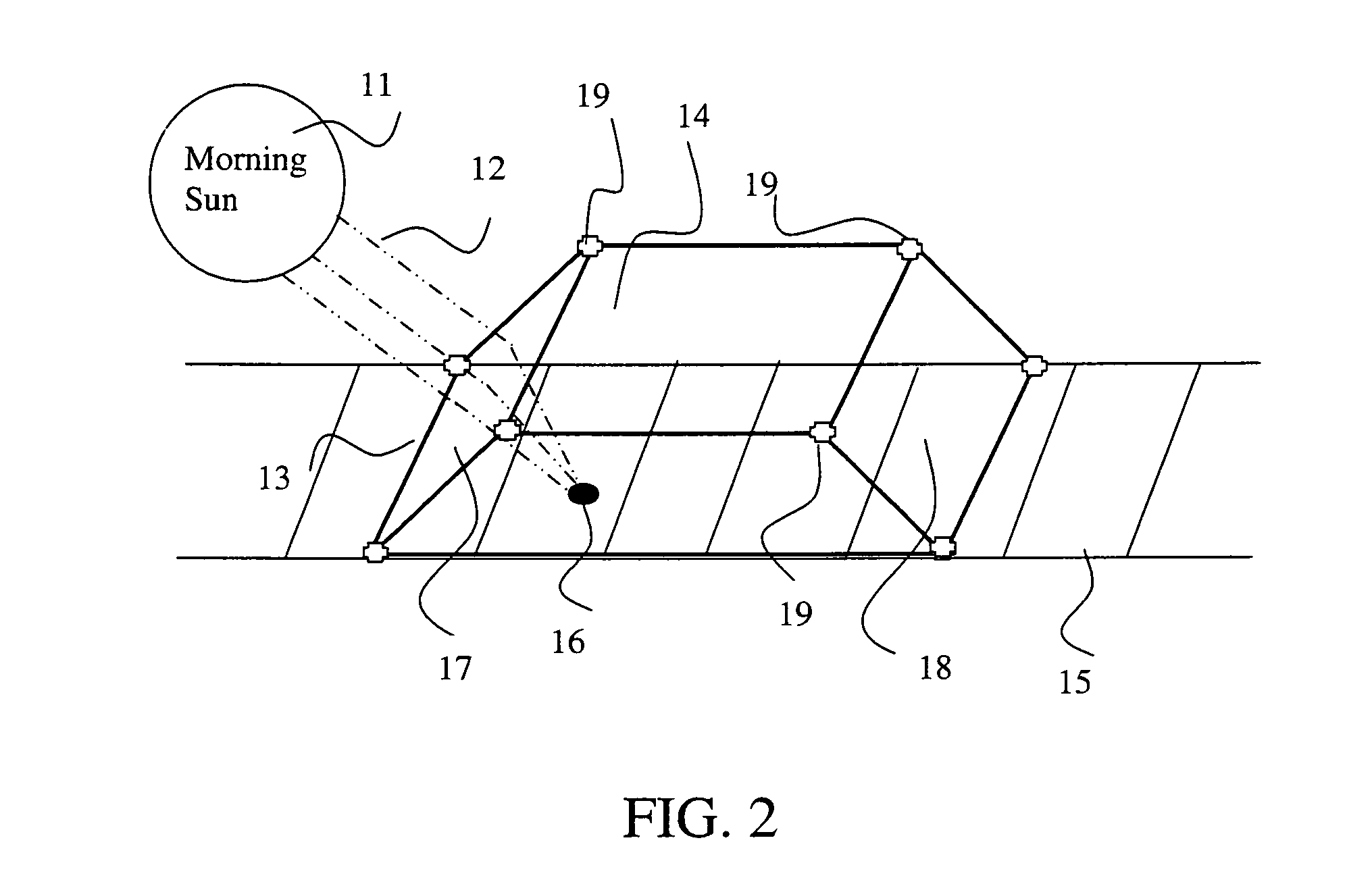Solar energy collector with XY or XYZ sun tracking table
a solar energy collector and sun tracking technology, applied in the direction of heat collector mounting/support, machines/engines, light and heating apparatus, etc., can solve the problems of unused space further reducing the overall efficiency of the prior art csp farm, etc., to improve the overall efficiency, reduce the overall efficiency, and save energy
- Summary
- Abstract
- Description
- Claims
- Application Information
AI Technical Summary
Benefits of technology
Problems solved by technology
Method used
Image
Examples
Embodiment Construction
[0017]It is well understood in the solar energy collection industry that approximately one kilowatt of solar power can be collected on a surface having an area of one square meter. Assuming an operating efficiency of approximately 25%, approximately four kilowatts of power can be collected on a surface having an area of four square meters. That collection area and associated power generation capability are compatible with the requirements of the average homeowner.
[0018]The solar energy collector of the present invention utilizes Fresnel lenses for concentrating sunlight onto a collection surface. Fundamentally, various shapes and sizes of Fresnel lenses may be utilized. For example, the rectangular Fresnel lens 3, illustrated in FIG. 1, will work well once the sun has risen to position 1 that is approximately 30° above the eastern horizon. When the sun is in morning position 1, lens 3 will focus the sun's rays 8 at a sun ray spot 6 on a flat or otherwise prepared surface 5. A plural...
PUM
 Login to View More
Login to View More Abstract
Description
Claims
Application Information
 Login to View More
Login to View More - R&D
- Intellectual Property
- Life Sciences
- Materials
- Tech Scout
- Unparalleled Data Quality
- Higher Quality Content
- 60% Fewer Hallucinations
Browse by: Latest US Patents, China's latest patents, Technical Efficacy Thesaurus, Application Domain, Technology Topic, Popular Technical Reports.
© 2025 PatSnap. All rights reserved.Legal|Privacy policy|Modern Slavery Act Transparency Statement|Sitemap|About US| Contact US: help@patsnap.com



